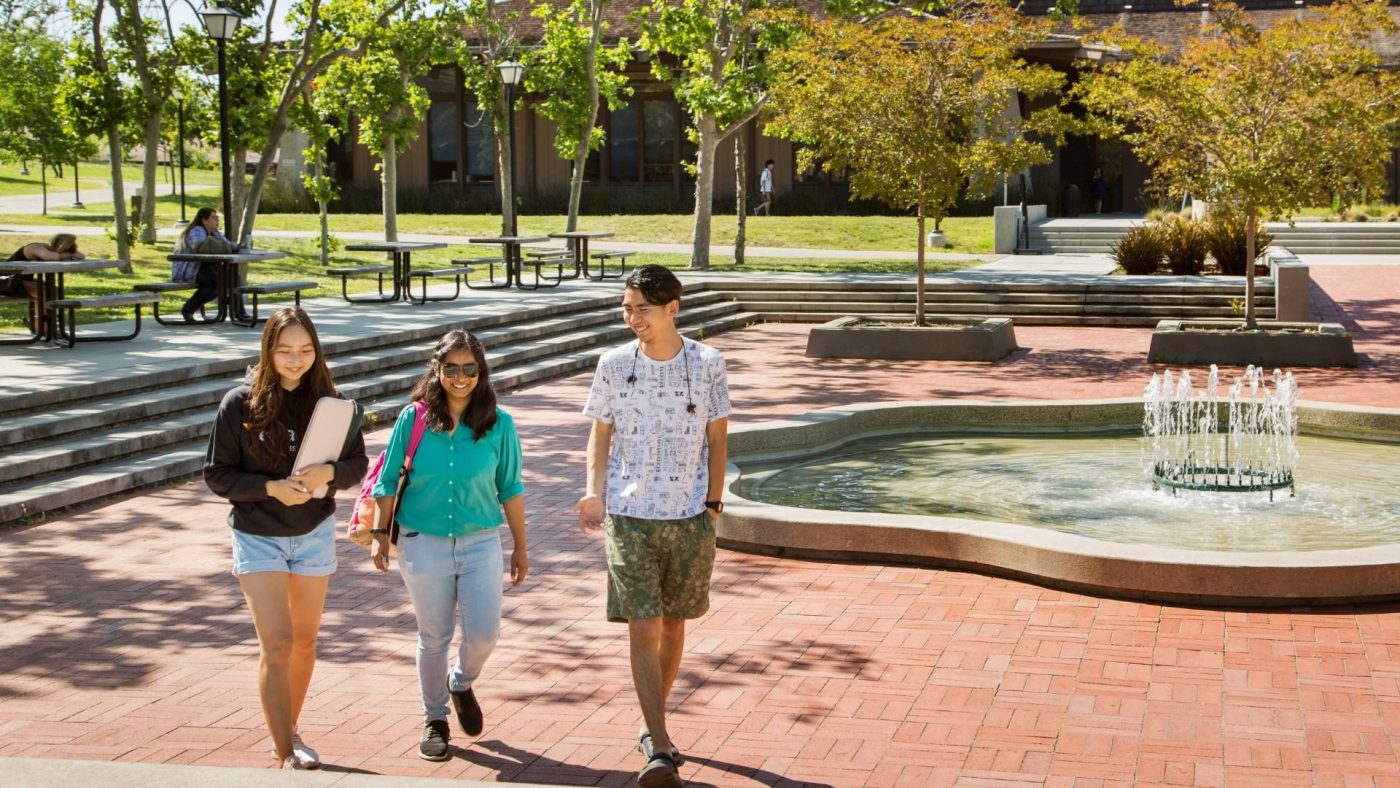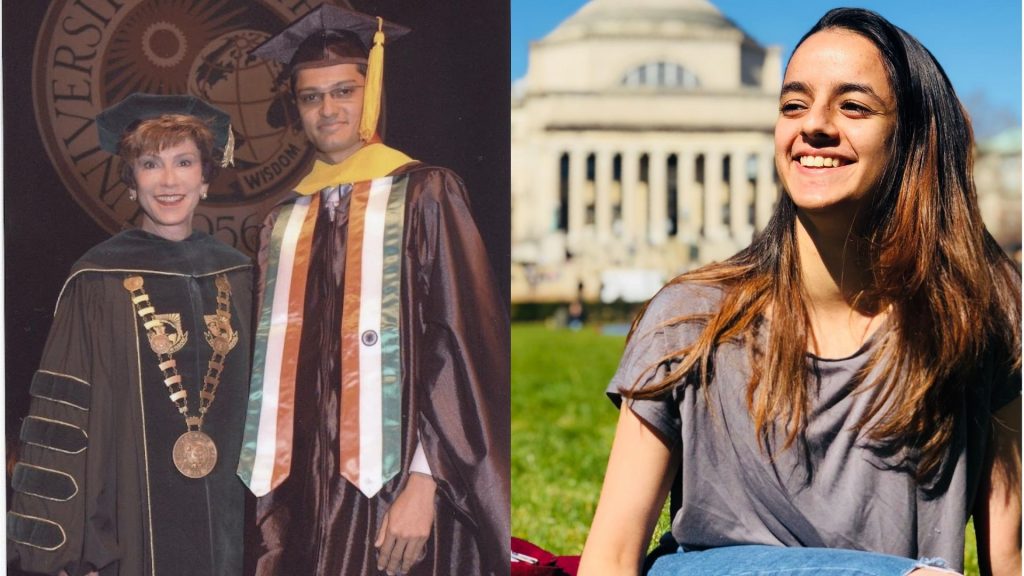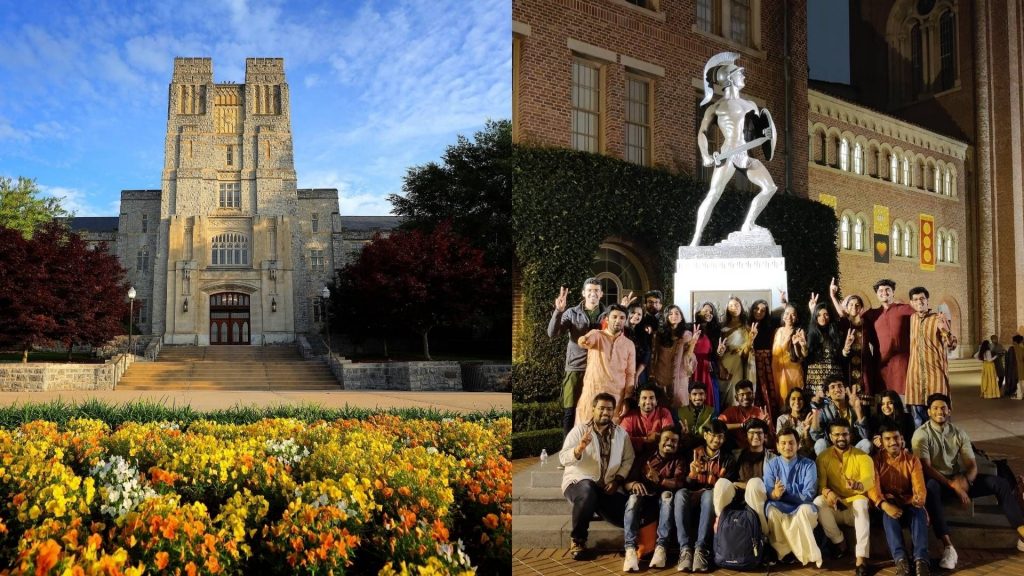Finding the best-fit university can be challenging. Read these tips from U.S. university officials and Indian alumni on how prospective students can find the right university to meet their needs and help them succeed.
April 2022

There are multiple factors to be considered while looking for the right fit institution—academic, social, environmental, financial and professional. Photograph courtesy Deepali Shah/Foothill and De Anza Colleges
Location, funding, class size, faculty, campus activities, placements—there are a host of actors international students need to take into consideration while planning to pursue higher studies at U.S. universities. However, many students focus heavily on the rankings or brand value of an institution when deciding where to apply. While ranking can be a way of assessing the overall academic environment of an institution, it should not be the primary consideration.
So, what is the most important factor students should keep in mind while choosing schools? “In my experience, there is only one answer to this question: the college fit, or in other words—the measure of how much a college or university meets your needs and wants,” says Cameron Sadafi, interim senior assistant director, international team manager at the University of California (UC), Berkeley. “Often, I see students get excited about UC Berkeley’s rankings, which tend to be outstanding. However in comparison to how the individual ‘fit factors’ of the university meet the needs of you and your family, rankings lose a lot of relevance regardless of the institution.”
Sadafi advises it is important to ask questions related to these fit factors: academic, social, environmental, financial and professional. “The fit of these factors to your individual needs will be crucial to your success at any college or university—significantly more than any ranking,” he continues. “Therefore, when choosing a college or university, it is important to identify which of these fit factors are most important to your individual success. Ask yourself what you need and want. Ask your family what they need and expect from you. Ask each university what it offers and can provide in relation to each of these fit factors and the ones most important to you and your family.”
The United States Department of Education lists nearly 4,000 degree-granting academic institutions and the search for a university that fits the prospective student’s needs can be overwhelming. Tyler Oxley, senior assistant director for international admissions at Virginia Tech, says it’s important to understand that the United States has different types of universities in different parts of the country. “There are large research universities or small public schools that can be situated in big cities and small towns,” he says. “So, I ask students to identify or try to figure out exactly what they’re looking for in a university. What do they want? This makes it easier to figure out the schools that have programs that fit in with their criteria.”
Different routes of exploration
Students can take different approaches to figure out their needs from the school or the degree. Naimish Upadhyay, who received his master’s degree in environmental science and policy from the University of Florida in 2009, says the process of drafting the statement of purpose made him think deeply about what he wanted to study and what he wanted to do with the knowledge he would gain from his higher studies. “That was also the question I was asked in my visa interview and having some clarity of thought certainly does help,” says Upadhyay.
Gauri Talwar, who double majored in applied mathematics and economics, had multiple interests and wanted to pursue all of them. She was admitted into Barnard College but her majors were primarily at Columbia University in New York City. The reason she chose these institutions was because “they had really strong academic programs and also the on-campus life was really lively,” she says. “I basically wanted to study math and dance and there were very few colleges that were really good at both.” Talwar, who grew up in Mumbai, was also clear that she wanted to go to college in a city. “I was very used to being around people, being around crowds. I don’t think a rural campus would’ve worked as well for me,” she says.
Cities can also offer professional advantages. Atita Shetty, a practicing architect from Mumbai who received her Master of Architecture degree from Ohio State University says her selection of university was based on a combination of her own research as well as institutes that her advisers either recommended or had graduated from. “Living in or near big cities can often mean better job prospects,” she says.

Left: Naimish Upadhyay (right) received his master’s degree in environmental science and policy from the University of Florida in 2009. Right: Gauri Talwar was clear that she wanted to go to college in a city. She was admitted into Barnard College but her majors were primarily at Columbia University in New York City.
Do your research
Many students put in intensive research to explore the universities they want to apply to. “The first step was to clearly understand what I wanted out of the graduate program. Since I had started exploring early, I had a bit of clarity about what I liked and what I didn’t,” says Ishwaar Seshadri who received a master’s degree in business analytics from the University of Maryland in 2019. “The second step was to understand how a program at a given university fit into this framework. For example, an analytics program at a certain university may tilt more toward technical exposure while a program with the same name may be entirely business focused elsewhere.” Seshadri’s research included factors ranging from classroom experience and financial aid to geographic location and alumni outcomes. “Once admission decisions were made and I had a set of schools I could choose from, I repeated this process again,” he says.
“Doing the research is time-consuming but it is well worth the time,” says Sudha Kumar, director of the University of Southern California Viterbi India Office. Questions students can ask about the university during the research process can include: Does it offer the kind of course that they are interested in and will it help them reach their goals? Is the coursework as practical or theoretical as they want it to be? Are the faculty leaders in their chosen subject area? Does the university have the kind of partnerships with industry that they would like? How is the ambience at the university? “For each student, the factor that is most important to them can vary and they should apply to universities that best meet their preferences,” she says.
Alumni networks can be contacted via the university or social media to learn more about the institution. These connections can be also be useful after getting admission to a university. Jayesh Bajaj, CEO of Volga Infotech Pvt. Ltd, graduated from the Viterbi School of Engineering, University of Southern California. Before leaving for the United States, his friends put him in touch with other students who had been accepted to the school. They left India together, sorted out accommodation and stayed friends. “It was wonderful to have this system to explore the culture and enjoy Los Angeles,” he says.

The United States has different types of universities in different parts of the country, including public land-grant research universities like Virginia Tech (left) and private research universities like the University of Southern California (right). Photographs courtesy Virginia Tech and University of Southern California
As complicated and long as the application process may seem, countless international students have successfully identified and been accepted at universities which have helped launch successful careers. As Oxley says, “The U.S. education system is so diverse, that there’s going to be opportunities for students, no matter what types of universities they’re looking for, and there’s going to be a right fit.”
Paromita Pain is an assistant professor of Global Media Studies at the University of Nevada, Reno.
How does one start the search for universities.
Nidhi
How does one start the search for universities.